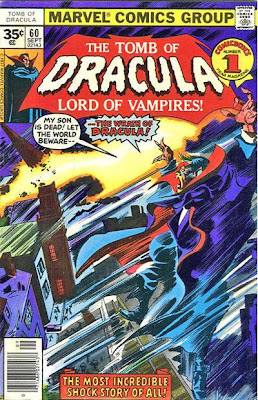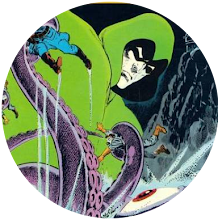After killing the killer, Dracula spends the rest of the issue in a state of demented soul-searching, even if he has no soul to search. In his fit of rage, he looks back on his life and its failures and the fact that all his descendants, including his own daughter, have never sought anything but his death.
Able to bear no more, Dracula sets out to kill himself by being hit by lightning. But the attempt fails and he finishes the issue vowing to defeat the forces of virtue that he blames for his plight.
But, in the graveyard, things are afoot. It seems that, thanks to Dracula's wife Domini, Janus' death may not be a long-lasting one at all.
Writer Marv Wolfman continues to steer the strip away from the good-guy fights bad-guy formula that'd always served Marvel well, instead moving things ever further into the realms of tenebrous soap opera.
The strip only had another ten issues to go, and the seeds of its demise were already being laid in this issue's editorial with Marv Wolfman announcing that, due to Gene Colan's other work commitments, the strip was switching to a bi-monthly schedule. But, while hindsight says the end was nigh, it doesn't show here. The title feels as vital as it's ever done, its pages practically an unleashed force of nature, meaning this issue does nothing to dissuade me from my notion that Tomb of Dracula really was the best American comic of the 1970s.









































































3 comments:
T.O.D. is definitely one of my faves from the first flush of my Marvel reading; Gene Colan is without peer in his ability to draw realistic, individual people, buildings, vehicles and create atmosphere. His work really found its home here and in Howard the Duck.
Drac certainly was the ideal vehicle for Colan's talents.
Well said, as with Daredevil, nobody does flowing movement like Gene Colan. A true master at work.
Post a Comment